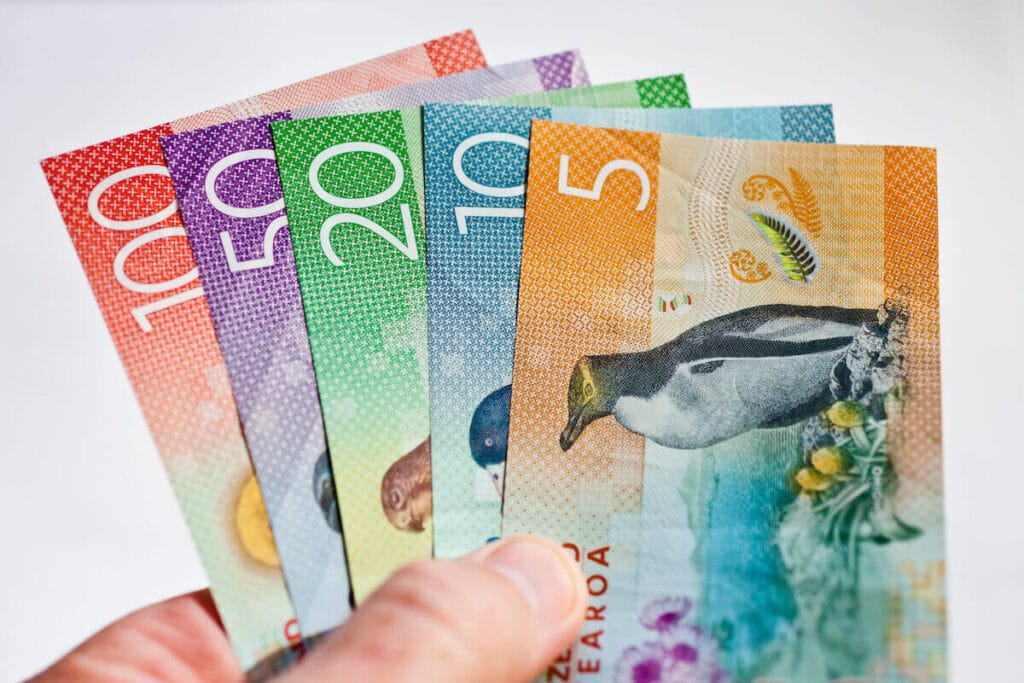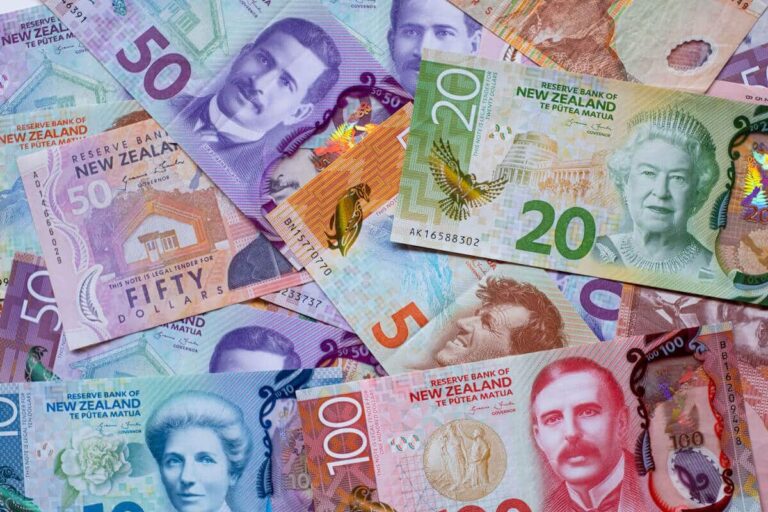The New Zealand dollar (NZD) is the official currency of New Zealand and is one of the most-traded currencies of the world. Like the U.S. dollar (USD), each NZ dollar consists of 100 cents—but there are no coins smaller than 10 cents. So New Zealand currency uses the Swedish rounding system for cash payments.
However, New Zealand’s banking system is highly integrated with the rest of the world, and digital wallets and contactless card payments are common.
Let’s take a look at the history of New Zealand currency and how to navigate the NZD exchange rate if you’ll be living in New Zealand or visiting there.
The history of New Zealand currency
The history of New Zealand currency begins with the original Māori inhabitants of the country—which the Māori call Aoteoroa. According to the official Encyclopedia of New Zealand, the “exchange of goods was a customary practice which distributed food and other materials around the country.”
This extended to trade with European whalers, and by the mid-1800s, pigs, potatoes, and other valuable goods were the de-facto national currency.
Although coins from other parts of the world circulated in the region, it wasn’t until the British government claimed the territory in the 1840s that British coins became widely available—and eventually, legal tender.
New Zealand used the British currency system for over 100 years, with one British pound (GBP) consisting of 20 shillings or 240 pence. In 1933, New Zealand began issuing coins of its own, but the New Zealand pound was still pegged to the British pound until it switched to the dollar system in 1967.
New Zealand currency denominations

The Reserve Bank of New Zealand is the country’s central bank, and it’s responsible for issuing currency and setting monetary policy. Today, you’ll find New Zealand currency in 10 different denominations: five coins and five banknotes.
New Zealand uses 10-, 20-, and 50-cent coins, as well as $1- and $2-dollar coins, and banknotes come in $5, $10, $20, $50, and $100 denominations.
The central bank stopped issuing one-cent and two-cent coins in 1990 and five-cent coins in 2006. It also withdrew the country’s $1 and $2 banknotes in 1991 in favor of coins.
New Zealand currency features a wide range of designs, including famous historical figures, local plants and scenery, and native birds like the kiwi.
New Zealand uses modern polymer banknotes with advanced security features that help to prevent counterfeiting and increase their life span.
6 facts about New Zealand currency
While you don’t need to be an expert in New Zealand currency to use it, we think these six facts offer a deeper appreciation of its role in New Zealand culture:
1. New Zealand money features British royalty.
Although New Zealand is self-governing, it’s still part of the British Commonwealth and treats the British monarch as its head of state.
Queen Elizabeth II has appeared on New Zealand currency for several decades, and new coins and banknotes will feature King Charles III.
2. New Zealand currency has value in several other countries.
New Zealand isn’t the only place where you can spend the New Zealand dollar. Several Pacific Island countries and territories, such as Tokelau and Niue, use it too.
The Cook Islands and Pitcairn Islands have issued dollars of their own, but these are less common than NZD and mostly serve as collectors’ items.
3. New Zealand decimalized its currency in the 1960s.
The Decimal Currency Act of 1964 replaced the pound with the New Zealand dollar. It took three years to launch the new currency—with nearly 200 million new coins and banknotes—which arrived on “Decimal Currency Day” in 1967.
The main purpose of the change was to simplify the New Zealand currency system. Initially, one pound was equivalent to two New Zealand dollars.
4. The New Zealand dollar could have been called the “fern” or “kiwi.”
Most New Zealanders welcomed decimalization, but the name “dollar” wasn’t a sure thing. According to news reports, members of the public recommended calling it the “fern,” “kiwi,” “crown,” or “zeal,” among dozens of other suggestions.
Australia had a similar debate when it decimalized its own currency in 1966, but both countries eventually went with “dollar.”
5. New Zealand uses the Swedish rounding system.
Swedish rounding, also called “cash rounding,” refers to the practice of rounding up or down to the smallest available currency unit. Since New Zealand withdrew its smallest coins from circulation, most retailers round up or down to the nearest 10 cents.
If your bill ends in 6 to 9, you’ll pay a few cents more ($10.99 = $11 NZD). If it ends in a small digit, you’ll pay a few cents less ($10.93 = $10.90 NZD). This only applies when paying with cash, and card payments will typically incur the exact dollar amount.
6. Australian banks play a major role in New Zealand.
Australian currency and New Zealand currency are entirely separate currencies, and you can’t use one currency in the other country. However, the two countries’ financial systems are closely linked.
Of the 27 registered banks in New Zealand, only five are based in New Zealand. The four biggest Australian banks account for 85% of New Zealand lending.
Understanding and using New Zealand money

With its distinctive designs and durable polymer material, New Zealand’s currency is convenient to carry around and easy to use. But do you need to carry cash with you when you visit or live in New Zealand?
That depends. New Zealand has a modern banking sector, and many vendors accept credit cards and digital payments. Still, it’s a good idea to have some cash if you’ll be visiting rural areas and for rare occasions when you need to leave a tip.
Otherwise, you can pay with a debit or credit card or withdraw cash from an ATM. Just be sure to check your international transaction fees in advance to avoid any surprises, and choose to pay in the local currency to get the best exchange rate.
New Zealand currency exchange rates
The New Zealand dollar is a relatively stable currency, but its value can fluctuate over time based on factors like the GDP and the central bank’s interest rates. Other major industries that affect the NZD exchange rate include tourism and agriculture.
Although it has a close relationship with the Australian dollar (AUD), it floats freely on foreign exchange markets and is also closely tied to the Japanese yen (JPY).
If you’re sending money to or from New Zealand, use a currency converter to check the latest exchange rates between each currency pair in real time. For example, 1 EUR or 1 USD will be worth a different amount of NZD, depending on when you exchange it and the state of international financial markets.
Send money home from New Zealand

If you’re planning to live and work in New Zealand, you’re going to need a way to send money back to your home country without incurring high transaction fees. With an international money transfer app like Remitly, you can send money to friends and family directly from your mobile device and get updates on your transfer every step of the way.
Remitly makes it easy to send money overseas, with transparent transfer fees and exchange rates. Over 5 million people have used Remitly to send money back home.
Download the app today to send your first transfer!
